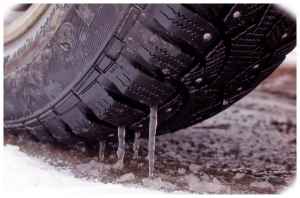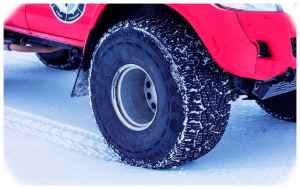Winter weather can be especially harsh on tires, especially if your vehicle has been sitting for a while without being used. Extreme cold can cause tires to become frozen, leading to decreased grip and increased risk of flats or other tire-related problems. One way to thaw frozen tires is by using hot water. This comprehensive guide will cover how to safely thaw frozen tires with hot water, the pros and cons of using this method, and alternatives that may work better in certain situations.
What Are Frozen Tires?

How to Safely Thaw Frozen Tires With Hot Water
If you suspect that your tires are frozen due to exposure to extreme cold, then using hot water to thaw them is the quickest and easiest way to do so. The process is simple: fill an empty bucket or large container with hot water from your sink or tub, then place the entire tire in the bucket. Allow it to sit for a few minutes until the ice on the tire’s surface begins to melt.
Once melted, you should be able to easily remove any remaining ice from around the edges of your tire using a small brush or similar tool. Make sure you are careful not to overfill the bucket with hot water, as this can cause damage to your tires if too much pressure is applied. Additionally, always wear gloves and eye protection when handling hot water and frozen tires. Also read how to care of Jeep’s tires.
Pros and Cons of Using Hot Water on Frozen Tires
The biggest pro of using hot water on frozen tires is that it’s quick and easy; however, there can also be potential drawbacks depending on how long your tires were exposed to freezing temperatures before being thawed out. The hot water can cause the rubber of your tires to become overly soft and easily punctured, so you should always inspect your tires for any signs of damage afterwards. Additionally, using hot water can also be hazardous if not done correctly, as it can cause burns or other injuries if misused.
Alternatives to Using Hot Water on Frozen Tires

Conclusion
Using hot water on frozen tires is a quick and easy way of thawing them out in order to prevent further damage or wear-and-tear; however, it’s important to be aware of both its benefits as well as potential drawbacks, such as not being able to restore structural integrity that may have been lost due to freezing temperatures. If you’re uncomfortable with using hot water, then alternative methods can be used, such as a tire-thawing tool or covering them with thick blankets or sheets. Ultimately, taking the necessary precautions to ensure your tires remain in good condition and safe for driving throughout the year is important.

Add Comment